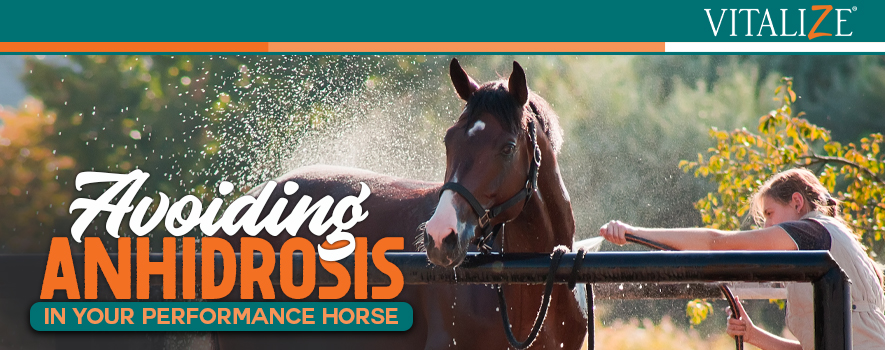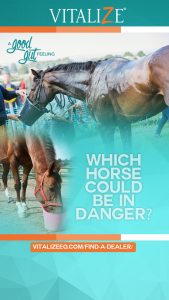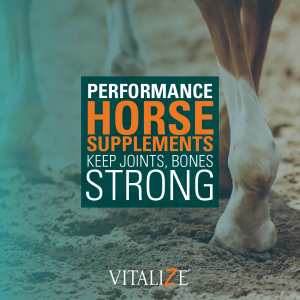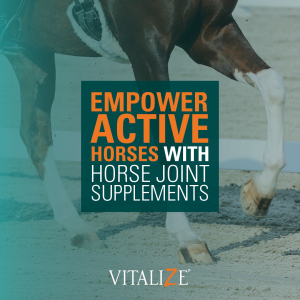
As summer rolls on, temperatures are heating up around the country. Envision yourself riding with a friend on a hot day. After working awhile, her horse has formed a thick foam under the reins, saddle pad, between its hind legs and is dripping from its belly. Your horse, on the other hand, is mostly dry.
Pop Quiz: Which horse is in danger?

While the one that is excessively sweating may seem to be the right answer, that is incorrect. The presence and further evaporation of sweat is how the horse naturally uses thermoregulation to maintain a healthy body temperature of 99.5 to 101.5° F. The dry horse, commonly called a “non-sweater,” could be suffering from anhidrosis.
What is Anhidrosis?
It is a condition when horses do not sweat adequately, which causes a build-up of internal heat and increased body temperatures, sometimes reaching nearly 110° F. This insufficient body temperature regulation not only decreases the horse’s ability to perform, but also puts it at risk from hyperthermia and heat stroke. Dark-colored, performance athletes that live in a hot, humid environment are most commonly affected by the anhidrosis. However, the condition can affect any horse.
What causes Anhidrosis?
While the direct cause of anhidrosis is not known, it is often thought to be associated with the over-stimulation of sweat glands due to environment (high humidity prevents evaporation of sweat) or exercise stress hormones causing the glands to shut down. Others suggest it could also be associated with metabolic or hereditary conditions.
Signs of Anhidrosis
The signs of anhidrosis vary in severity, so it is important to know your horse’s normal behaviors. Consult with your veterinarian for a proper diagnosis if you observe signs including:
- Lack of sweat
- Increased Respiratory Rate and Rectal Body Temperature AND takes > 30 minutes to return to normal after exercise (Normal RR: 8-12 breaths/min., Normal BT: 99.5-100.5°F)
- Decrease in performance when temperature increases, lethargy
- Heavier breathing than expected at rest and during/after exercise
- Poor skin and coat condition
Prevention of Anhidrosis:
- Always allow shade and clean, cool water 24/7 to decrease environmental stress.
- If stalled, turn out your horse at night instead of day to avoid the hottest hours of the day.
- Keep the barn well ventilated with fans through the barn aisle and in the stalls.
- Plan to ride in the morning or evening (coolest hours of the day) and always allow a long cool-down.
- Shower your horse with cool water after riding and scrape or dry off excess water.
Treatment of Anhidrosis:
The vet may conduct a “sweat test” by injecting terbutaline subcutaneously to initiate the production of sweat glands. By observing clinical signs, your vet can presumably confirm whether your horse has anhidrosis, however lab tests are also a diagnosis option. Treatment they may suggest includes:
- Limiting exercise.
- Always accommodate your horse with a cool environment (shade, water, fans, misters, cold hosing).
- Supplementation of electrolytes or heat stress product
Fortunately, Vitalize® has created another solution to help your horses win the game against heat this summer and give YOU a “leg-up” above your competitors. Vitalize Blazin’ is the most innovative product available to help manage the effects of heat stress in horses. Specifically, it helps support normal recovery from heat in three ways.
- Supports cooling mechanisms to help maintain a normal, comfortable body temperature
- Contains salt, sugar, minerals and other ingredients that support cellular hydration and adequate water intake
- Contains Aspergillus oryzae to support the horse during times of heat stress, which research shows may discourage increased respiratory rates and help maintain a normal body temperature.
“I bought some Blazin’ for our barrel horses that we are currently hauling and run on Lasix, just to help combat the heat. We had a mare stop sweating a week ago, she has been getting it daily since then and today we have full sweat. I am so thankful we have this in the barn!” -Melanie Lipp

